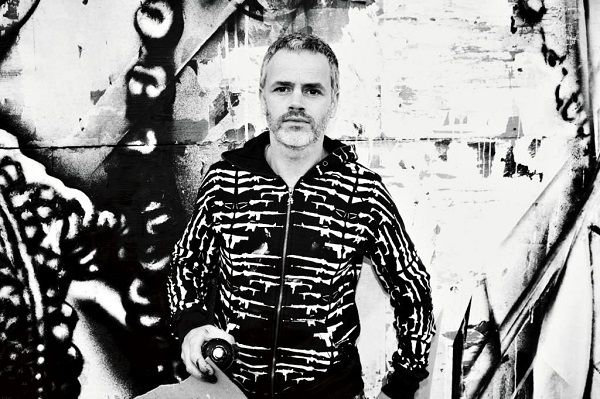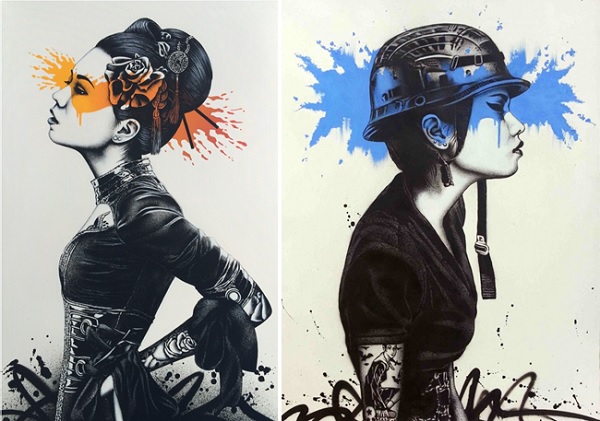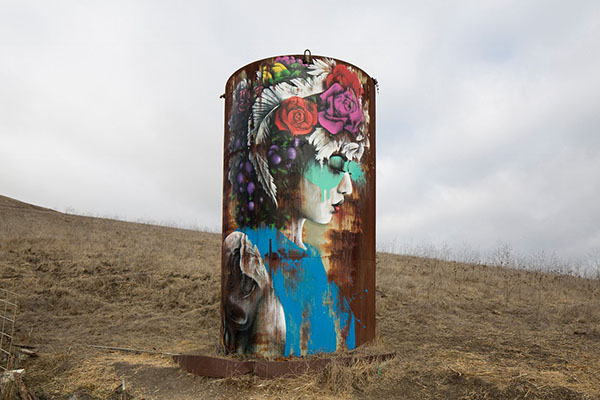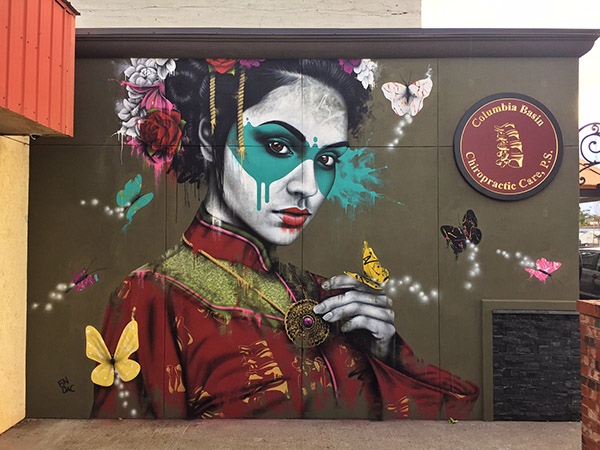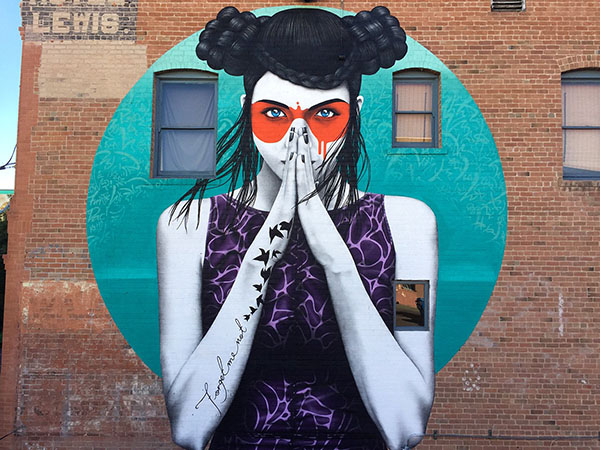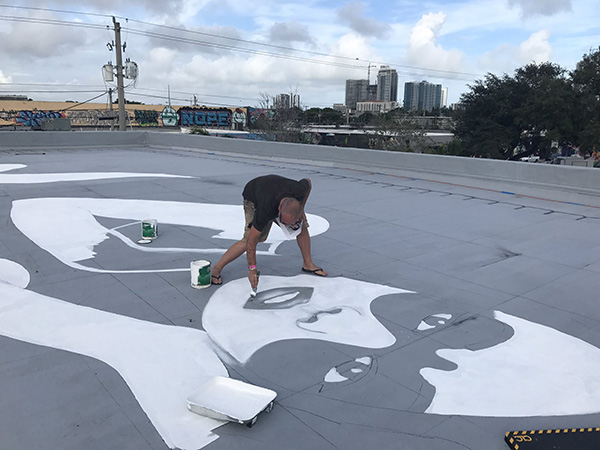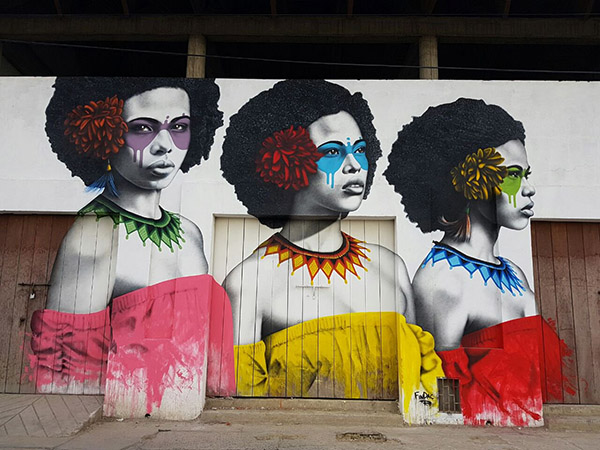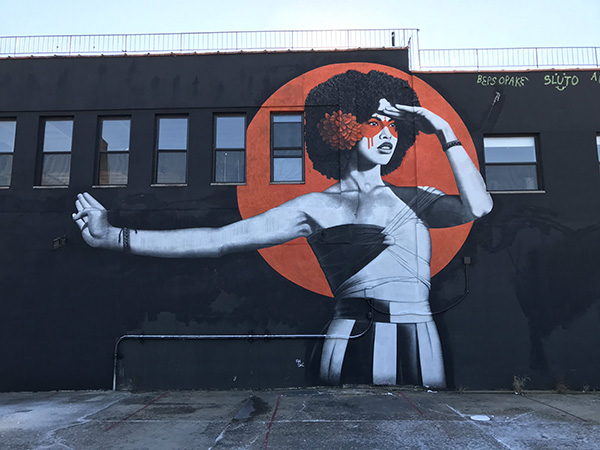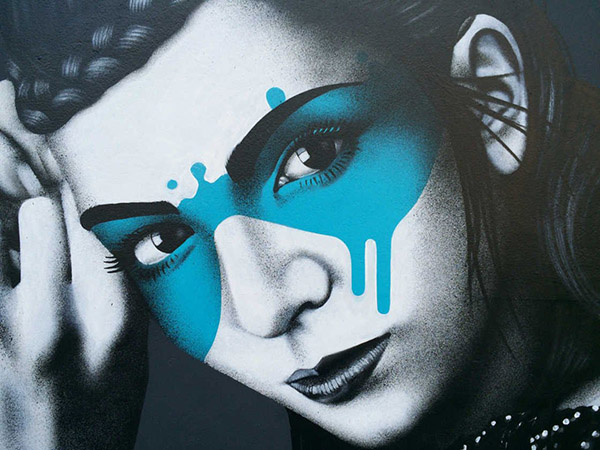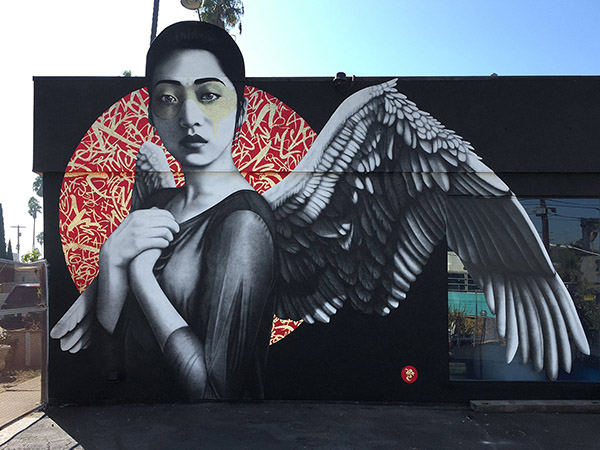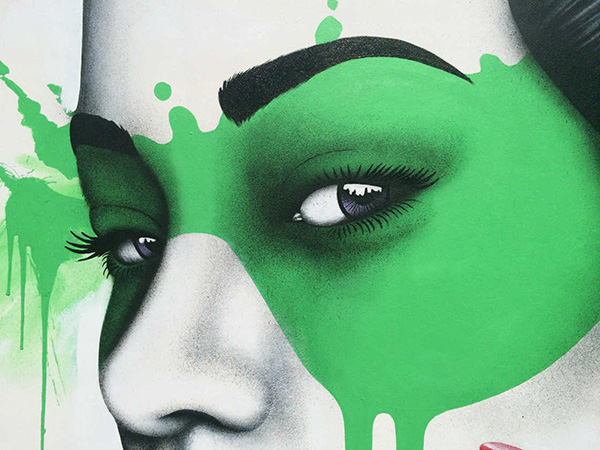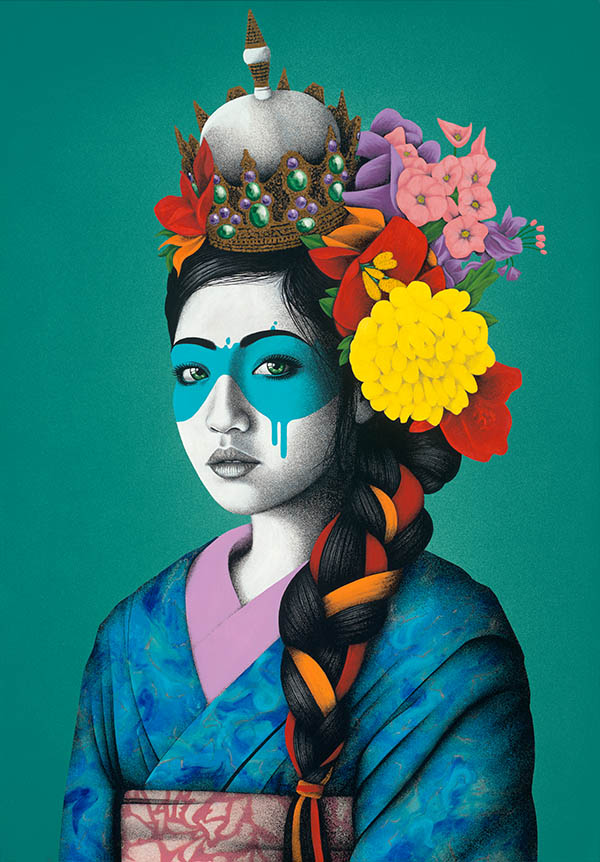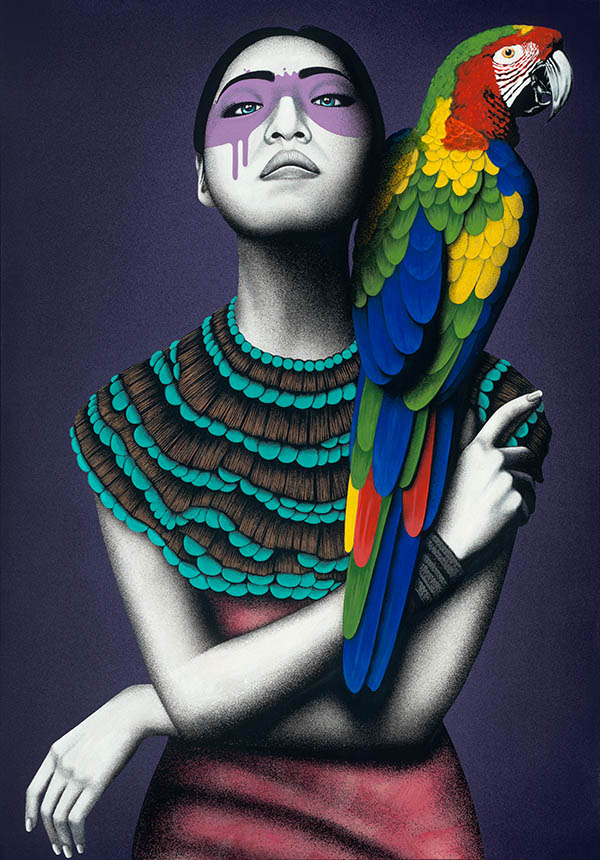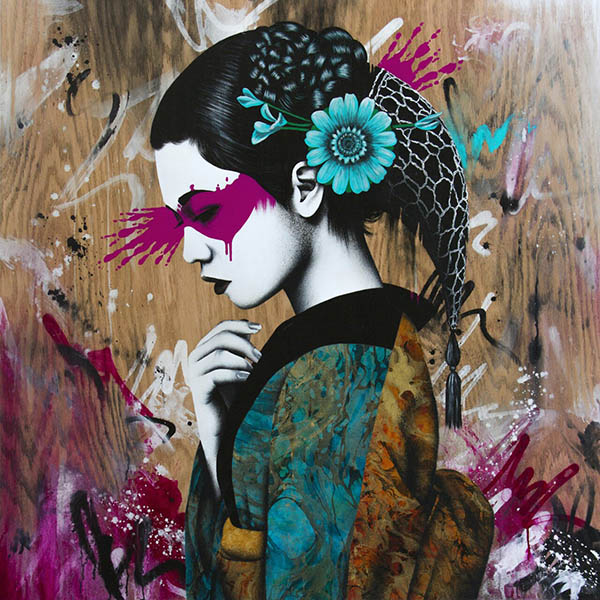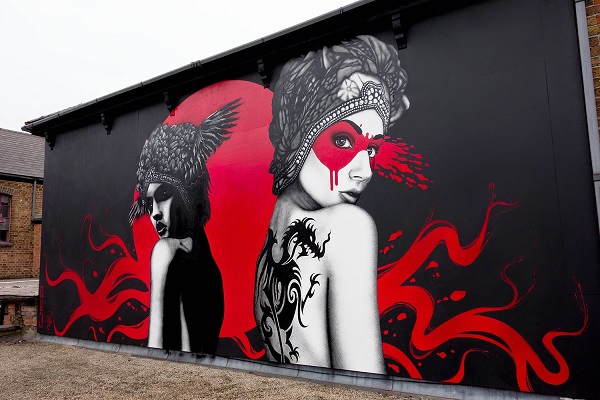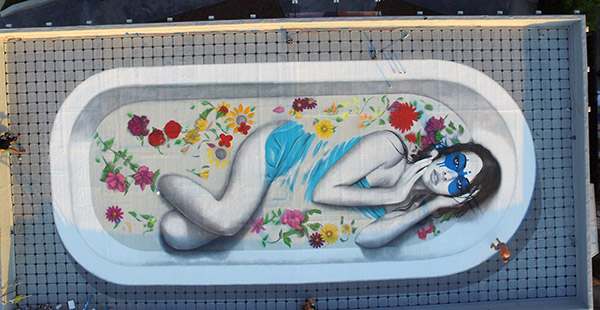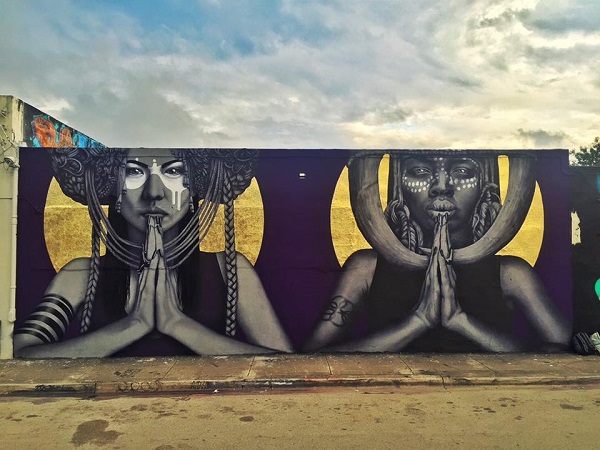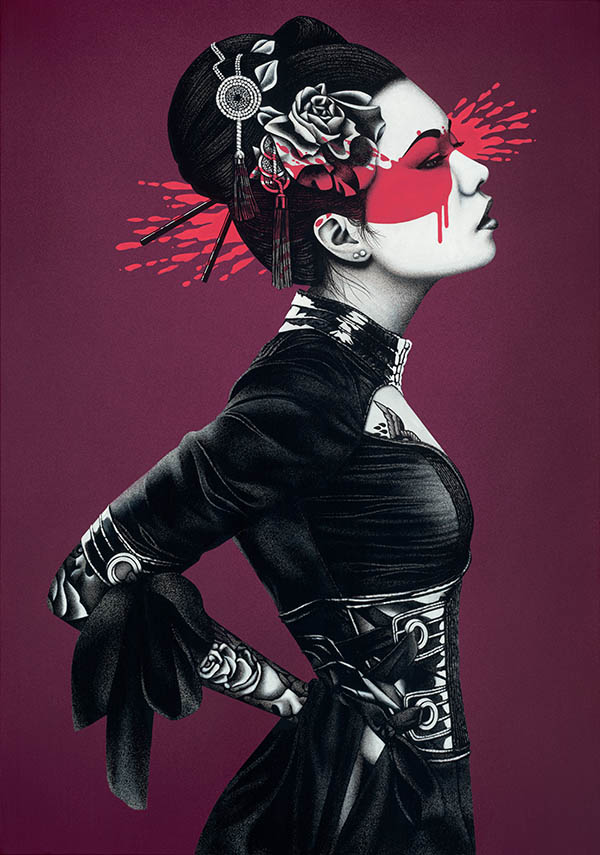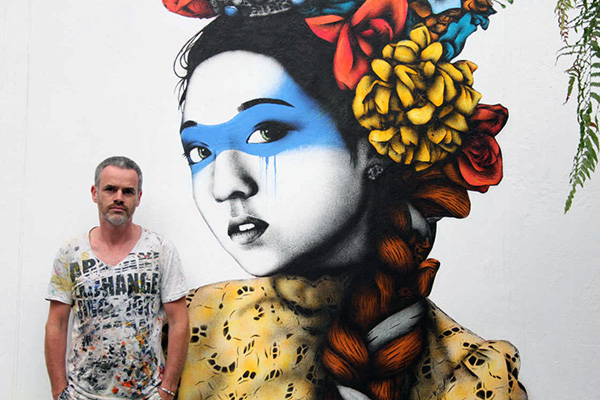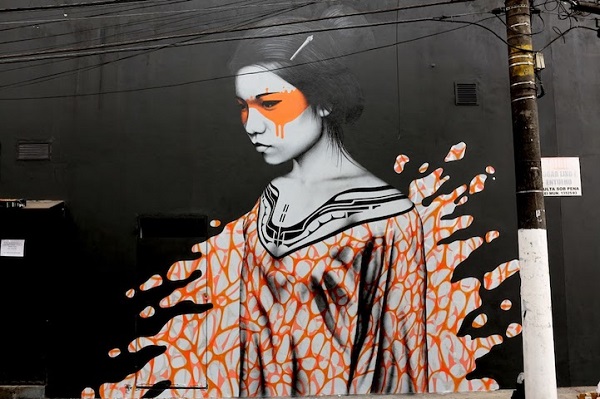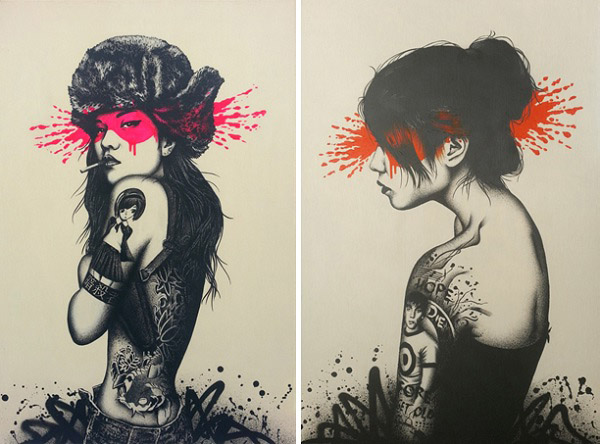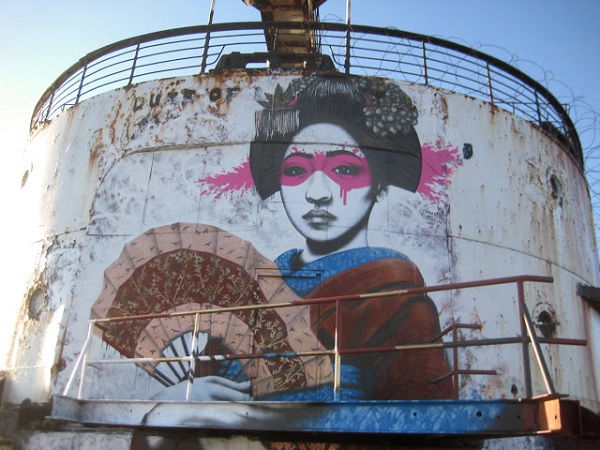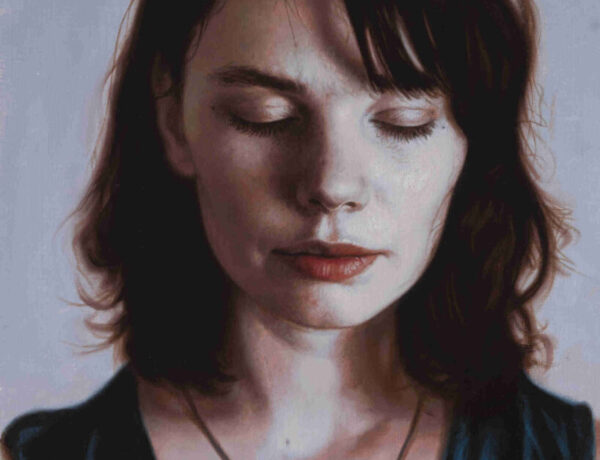Just visualize it. You’re walking around a beautiful city on a usual afternoon. It doesn’t matter if it’s a brand-new locale, or a place you call home. Everything is going as planned. The sun is still in the sky, and your feet briskly tread the sidewalk as you walk through your day. You walk by an old building that you’ve never noticed before. It’s been there all along, but you’ve never really seen it — at least not as you’re seeing it now. The building is spangled in all manner of spray and brushed paint. Colorful, vibrant, and alive; the portrait of a beautiful woman is sprawled across the wall. Larger than life, but still shrouded in mystery; a painted mask is spattered over her eyes, and there is no explanation for her presence.
You’ve seen that place now. You know it’s there, and you know what was in your mind when you saw it. …Explanations for it are irrelevant because, of all the buildings, walls, and alleys in the world, you’ll surely never forget it.
I was incredibly privileged to interview Fin Dac, who is creating experiences like this in communities all over the world. Originally from Ireland, Fin has paved his own path, emphatically rebelling against the usual street art scene. His style is uniquely dubbed “Urban Aesthetics,” because his message is all his own.
Facebook | Instagram | Tumblr | Twitter
Fin, how did your career as an artist get started? Do you have any formal education or training?
It started in the worst way actually: a bad breakup from a long-term partner, court cases and issues with the legal system in the UK as far as seeing my children. I was pretty much a broken man at that point and art was simply a way of taking my mind off my life. There was no plan to be an artist and certainly not a full time one… it just so happened that through all that hurt and pain I found the key to a happier life through my art. I have no art education, but from an early age, I guess family and friends would have said I had a natural ability.
Your technique is known to be a bit different than most urban art—and certainly produces a uniquely expressive style. Can you talk a little bit about the evolution or progression of your projects both in concept and in technique?
When I started 9 years ago, I wanted to include my love of graphic novels in my art… or at least my own take on it. So, to begin with, I was painting a very ‘Sin City’ themed type of work: hot chicks with guns, tattoos, paint (blood) splatters, etc. But at that time, all you ever saw in street art were very sexualized and objectified renditions of women and I decided I didn’t want to feed in to that any longer… there was enough of that in mainstream media anyway. At the same point, I was trying to soften the technical look of my work too so the thought processes merged: a softening of the visual language as well as the thematic language. I guess you could say that I still paint badass women, but for me, the look is not so male-focused or dominated and certainly I don’t feel my girls are objectified in any way.
Has traveling informed or changed your technique? I’ve tried to imagine how you prepare for these works away from your studio, and it seems like it would be extremely complicated!
Travelling changed everything for me… you have no idea how it opens up your mind and attitude to everything until you really start to do it. We grow up in cultures that bend or twist our points of view to certain societal, political, religious, or even continental ways of thinking/operating. Travel broadens or breaks whatever modus operandi we have, and renders us ripe for influential change. What that changed in terms of how I work is that often, nowadays, I’m creating images on the road on my laptop, and the first version I paint is on a wall instead of on a canvas.
I saw an interview with you where you discussed some of your reasons for taking your work on the road, or to an international audience. You said you felt that your work did not quite fit into the London scene. Can you speak a bit on why you feel this way, and what innovations you set out to continue or to develop internationally?
Back then (approximately 6 years ago), there weren’t many street artists painting what I would call beautiful portrait work. I always looked at the visual language of my work as different from the norm (whether that is true or not) and didn’t feel a need to fit in or change my style so that peers would like it. The tired ways of seeing and thinking about street art annoyed me: the fact that in certain circles it was frowned upon to use brushes, or you were an ‘art fag’ if there was anything about your work that even slightly deviated from the norm. I got into this pretty late in life so I wasn’t into the whole gang culture or adolescent way of behaving or seeing things. When I began to realize that I didn’t have much in common with other street artists, instead of seeing it as a negative (as they did) I viewed it as a positive: that my differences should be the things that define me and give me strength instead of making me feel bad about why I, and my work weren’t accepted. It was why I started calling my work urban aesthetics instead of street art: a big ‘fuck you’ to those who thought that they could affect me and my work with their negativity.
However bold and powerfully posed, your work often focuses on female beauty. What/who inspired you to work this way and continuously reveal these beautiful glimpses of empowerment? Is there a specific motivation for the unique blend of traditional ethnic dress and western fashion on your models?
From the start I wanted to depict women in positive light, so maybe that was a reaction to the way I had been treated by my ex-partner or even the difficulty that I’d had in finding the right partner. But I definitely didn’t want my personal, negative experiences to cloud my work in any way. But I’m also not a fan of the way that women are depicted in all circles of the western world. The type of glamor or dressing up that’s associated with modern life is not appealing to me in any way: I’d rather see someone express their individuality in the way they dress than see another Paris Hilton/Kim Kardashian clone with a barely-there dress or outfit. This to me isn’t sexual or sensual… it’s simply a cheap way of showing what you have to offer as a woman. The elaborate costumery I depict is a reaction to that; to highlight the fact that not everything has to be on show in order for a woman to be alluring… quite the opposite in fact.
Unlike works that are limited to gallery space, your pieces are experienced in public places. Has the audience reaction been different because of this?
It’s hard for me to say because I was never a gallery artist; my experience really started with my public pieces. Yes, I had honed my craft in the studio but I displayed my work so infrequently that it never dawned on me that there was a difference between the two. Honestly, I stayed away from gallery work for a long time because I didn’t want my life to become a business for someone else… and I still approach it this way. The limited number of galleries I work with (just 3 worldwide) are constantly chasing me for new work and constantly being disappointed because this side of my life is of secondary importance to the traveling and public work. I don’t see that changing any time soon.
What types of censorship (if any) have you experienced as a result of working in public spaces?
Two or three murals have had campaigns to get them removed: usually started by one miserable individual who has no soul. None have been successful and have only served to highlight or promote the work even more. I don’t think the nature of my work elicits negative reactions per se. I paint beautiful women… not many people feel the need to complain about that.
Amidst all the incredible planning you must do for each, you still have cultivated resonance with the specific locations of your pieces. It creates a community relationship with the experience of your work, which must be incredibly rewarding. Has local feedback changed the meaning of your job?
The site-specific way of working started because of the very first trip I took as a full-time artist. At the time, I was still a stencil artist so had prepared everything before traveling. All I kept hearing from locals was, “why have you painted a Japanese girl?” (I was in Colombia). My automatic setting is still to paint an Asian face but I have gone out of my way to try, wherever possible, to make the work resonate more. As a painter of public works, I think it’s important not to just slap your image/design on a wall and not think about its impact.
Everyone wants to know the meaning behind the signature “masks” of color on the faces of your subjects. Can you speak a little bit on why you choose to leave this a mystery?
I work on the basis that the human mind works like this: “Give me a fact and I’ll forget it as quickly as I’ve heard it but give me a mystery and I’ll ponder it forever.”
What’s next for you? Last you mentioned on Twitter, I believe you were in New Delhi? Without spoiling any surprises, can you tell us a bit about your immediate plans?
I’m working on a sushi/fusion restaurant for friends. I painted the facade of their ‘Nagai’ restaurant in Ibiza and it became somewhat of a landmark there and gave them a certain amount of brand identity that they wanted to continue with for their new venture in Delhi. I’ll be here for a month working closely with the team on multi-faceted works that will incorporate numerous textures/elements and hopefully bring a whole new level to the works I do.
Short ‘making of’ video below of Fin DAC leaving his mark on Sydney, Australia.
‘Koibito’ was painted over the course of 5 days in the Seaforth district of Sydney and is another mural in his ‘Hidden Beauty’ series of works.
Fin DAC in Sydney from Fin DAC on Vimeo.


